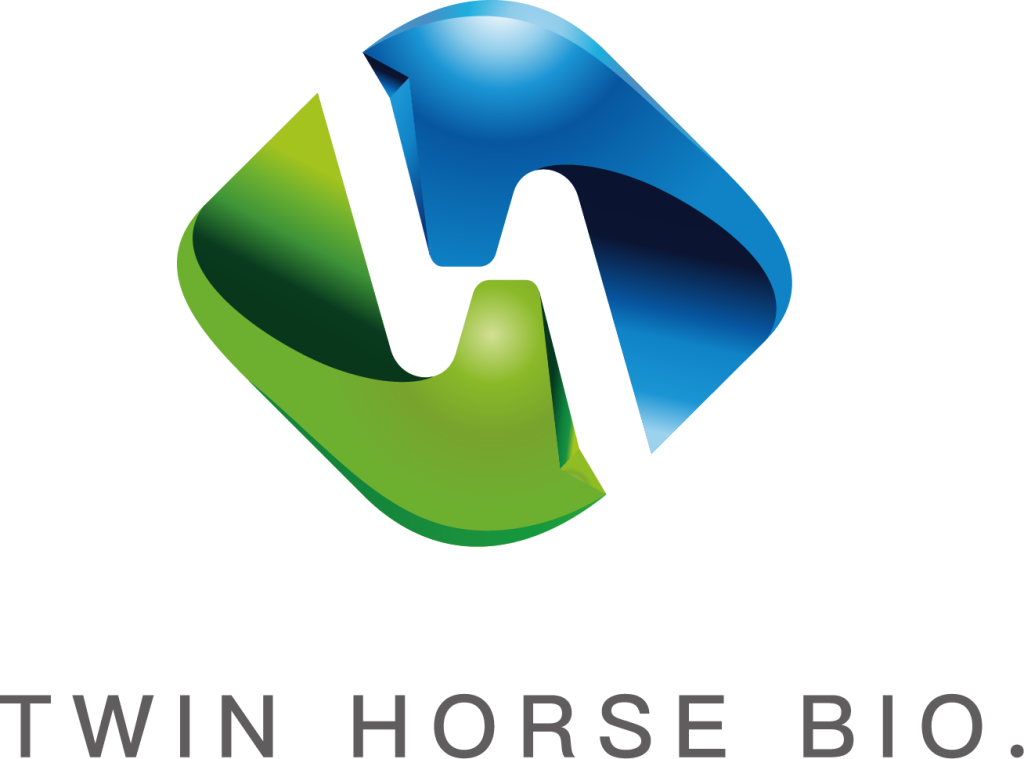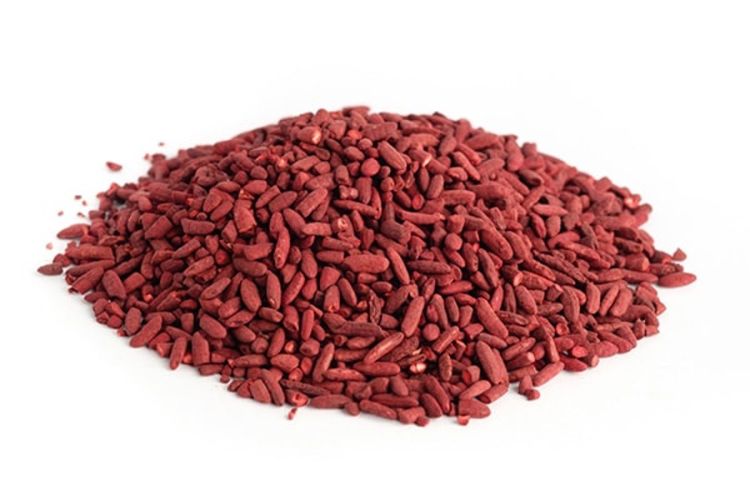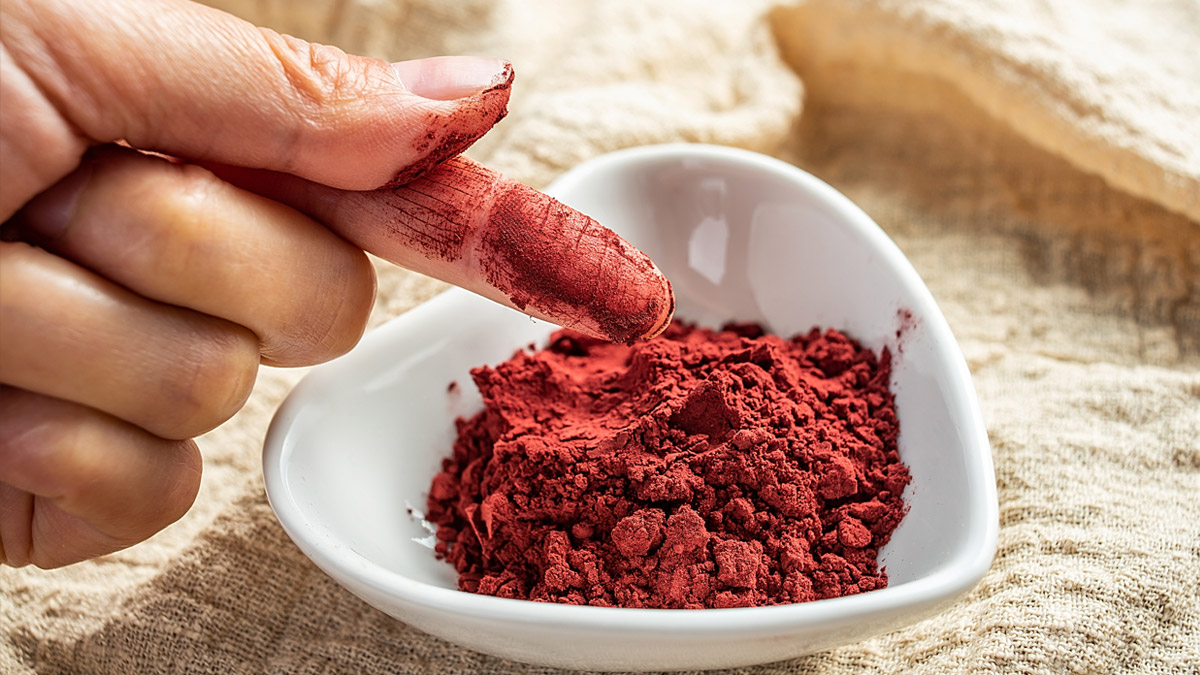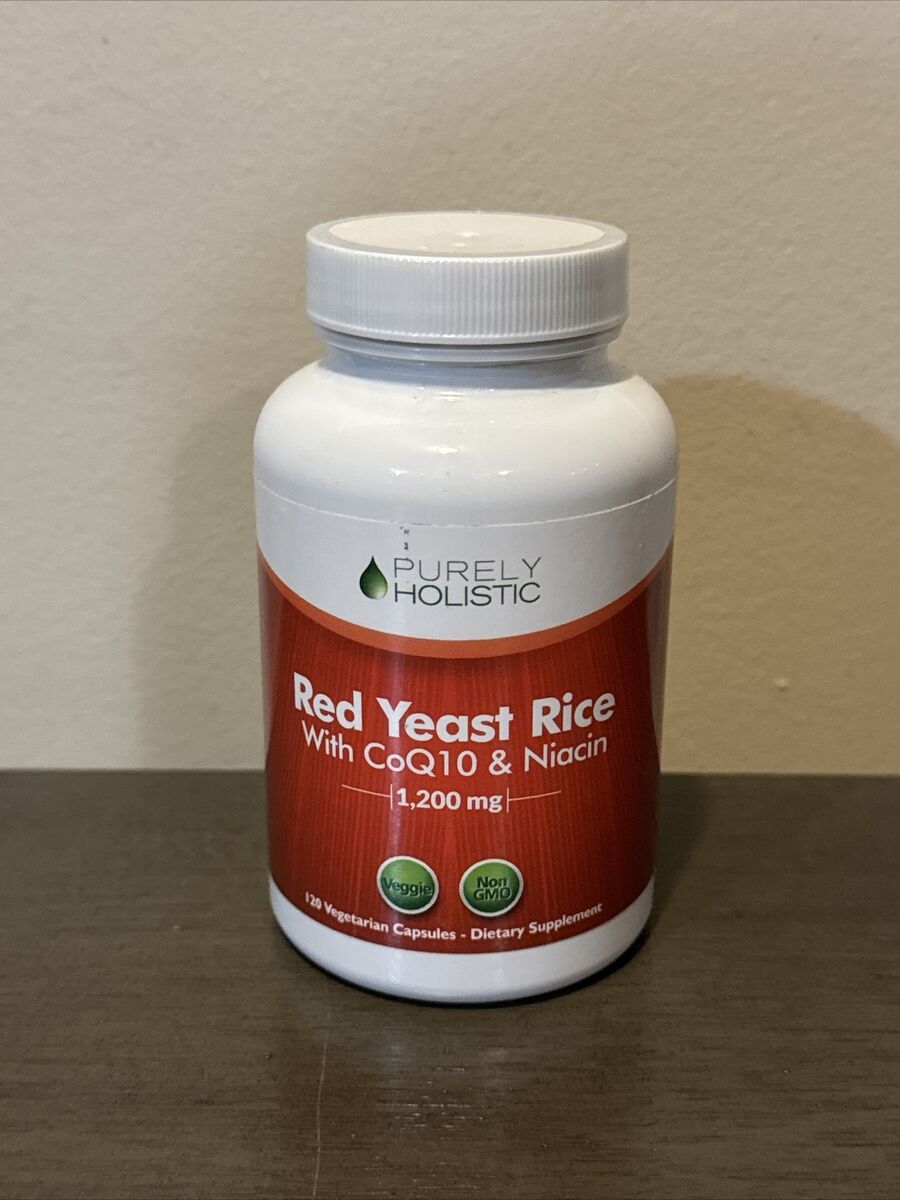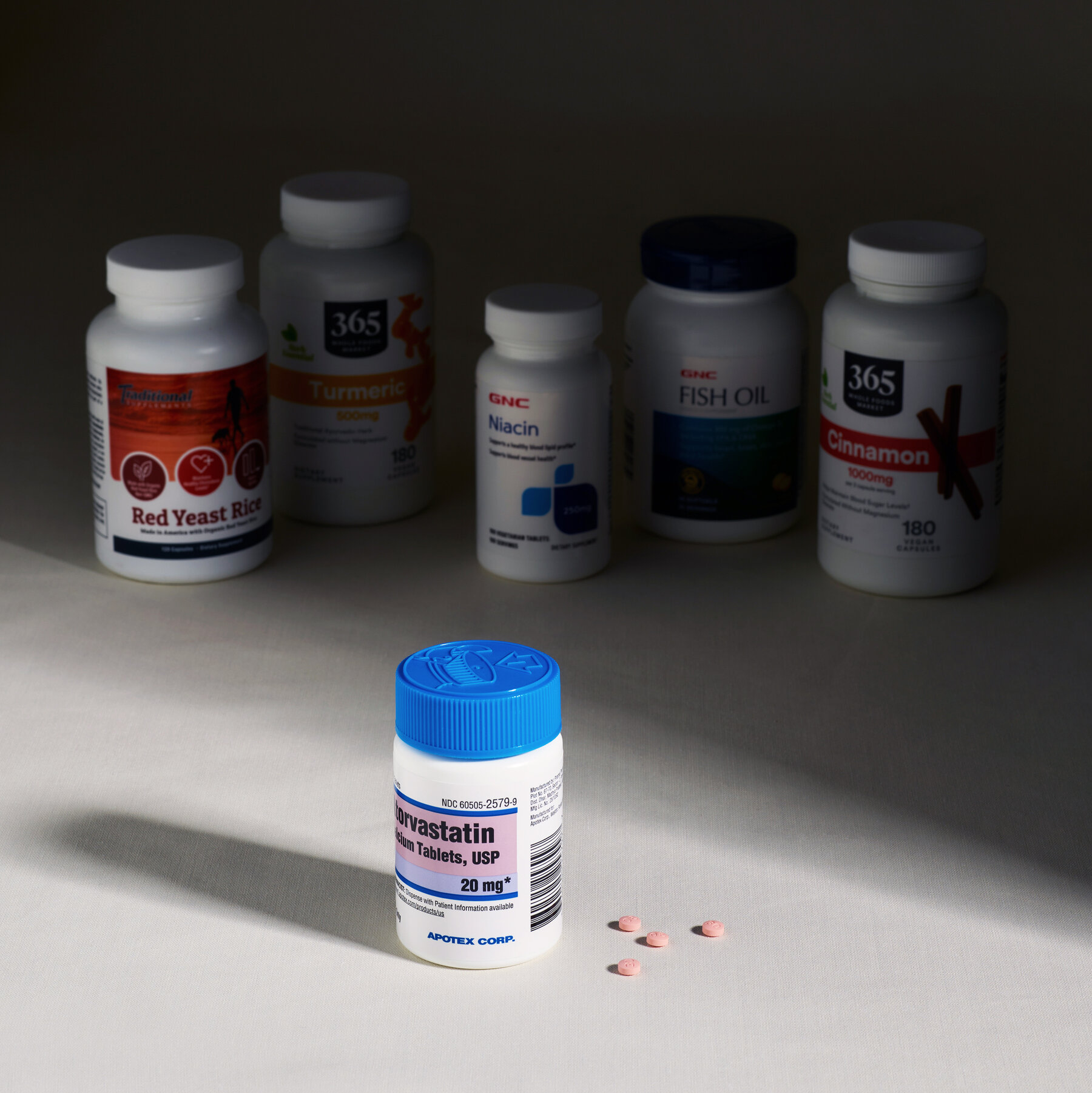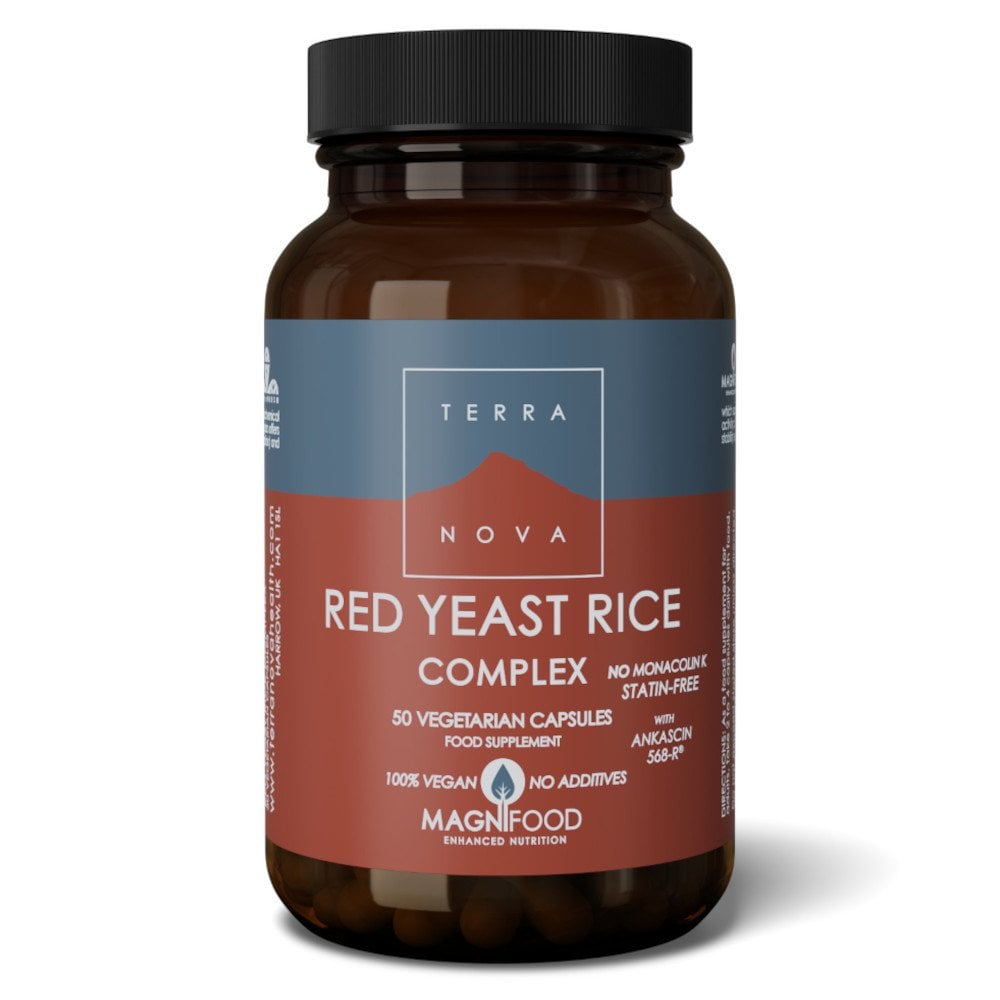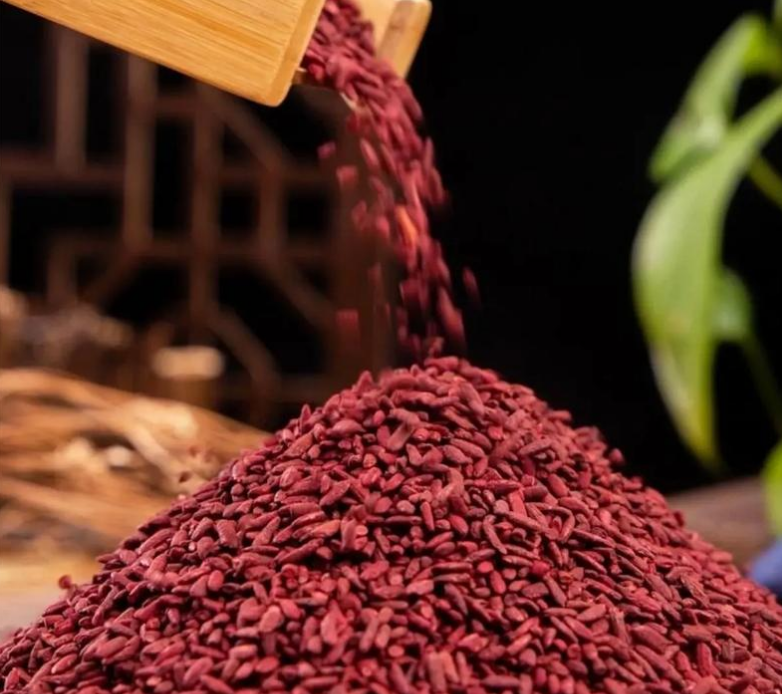Red Yeast Rice Contains Monacolin K
Red yeast rice contains the active ingredient Monacolin K, which is very similar to lovastatin, a commonly prescribed cholesterol-lowering medication. In one clinical study of 120 individuals, administration of 1,200 mg of red yeast rice per day for 12 weeks resulted in an 18.6% reduction in total cholesterol and a significant 20.5% reduction in LDL cholesterol. This reduction in LDL is important because high LDL is associated with the depositing of plaque into the arterial wall, leading to atherosclerosis and increasing one’s risk for cardiovascular events including heart attacks and strokes. Continuous intake of red yeast rice with Monacolin K might serve as a natural substitute for people who wish to reduce cholesterol levels without the intake of statin drugs, thus offering a potential solution to improve heart health.
Monacolin K in red yeast rice acts through the inhibition of the enzyme HMG-CoA reductase, which is involved in the synthesis of cholesterol in the liver. One study published in The Journal of Clinical Lipidology found that individuals who took red yeast rice over a period of just 8 weeks saw their total cholesterol fall by an average of 14%, with LDL levels dropping by 22%. This was comparable to prescription statins, though with fewer side effects. Additionally, those who used red yeast rice saw a 15% increase in HDL cholesterol, the “good” cholesterol that helps remove LDL cholesterol from the bloodstream. The ability to improve both LDL and HDL cholesterol levels makes red yeast rice a promising candidate for cardiovascular health.
For individuals dealing with elevated cholesterol, the use of red yeast rice can be an effective strategy. In one study involving 80 patients with high cholesterol, 1,600 mg of red yeast rice given daily lowered total cholesterol by 16% and LDL cholesterol by 19% after 10 weeks, whereas total cholesterol levels among those using a placebo fell by only 2%. This therefore depicts how constant, moderate dosages of red yeast rice can be a potent tool in managing cholesterol levels and stabilizing plaque in the arteries. It is important to note that individual results may vary, but these statistics surely indicate very promising results for people with mild to moderate elevations in cholesterol.
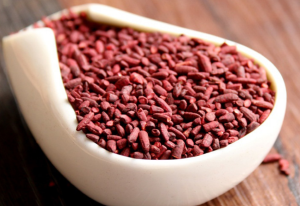
Lowers LDL Cholesterol
Red yeast rice has been cited as being an effective nature-based means of reducing cholesterol levels related to LDL cholesterol, that primarily feeds plaques formation in the arteries. The consumption of red yeast rice by 100 healthy individuals was evaluated in the American Heart Journal. These showed a significant reduction in LDL cholesterol levels, with an average of 22% after 12 weeks of supplementation with 1,200 mg of red yeast rice daily. This reduction in LDL is important because high levels of LDL are directly associated with the development of atherosclerosis, a condition where plaque builds up and narrows the arteries, leading to an increased risk for heart attacks and strokes. Data from this study support red yeast rice as a cost-effective and natural method for managing cholesterol levels.
The active ingredient in red yeast rice is Monacolin K, which exerts its action by inhibiting the enzyme HMG-CoA reductase, responsible for cholesterol production in the liver. A clinical trial conducted by the Journal of Clinical Lipidology evaluated the effects of red yeast rice on 150 participants with high cholesterol. In one such research study, the use of 1,500 mg doses of RYR significantly reduced 20% LDL within 8 weeks of commencing with intake. As with studies showing efficacy equal to that for prescription statins, red yeast rice had comparative effects when administered alone but may impose less risk related to unwanted side effects of drugs or other interactions in a synergistic sense. Such a considerable reduction in LDL cholesterol could indicate that the red yeast rice is, in fact, a realistic alternative for people who need to lower their cholesterol without using statins.
A similar study was conducted on patients with hyperlipidemia and proved that lifestyle modification combined with red yeast rice supplementation could bring significant improvements in cholesterol levels. In a group of people who took 1,200 mg of red yeast rice daily for a period of 6 months, LDL cholesterol decreased by 16%, while in those who made only dietary changes, LDL cholesterol decreased by 4%. There was also a 10% reduction in total cholesterol. This further illustrates red yeast rice as a dietary supplement that, when combined with a healthy diet and regular exercise, may help reduce LDL cholesterol levels significantly and improve cardiovascular health. The fact that red yeast rice can achieve such quantifiable effects establishes it as one of the prime ingredients in cholesterol management and heart health.
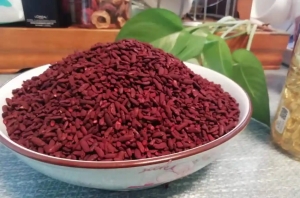
Improves Endothelial Function
Endothelial function is important in cardiovascular health due to the endothelium being the inner lining in blood vessels that regulates the tone of blood flow and blood pressure. Impaired endothelial function is considered the initial sign of atherosclerosis and is closely related to an increasing risk of heart disease. Red yeast rice, through its active substance Monacolin K, has been reported to exhibit positive effects on endothelial function. A study published in the European Journal of Clinical Nutrition included 120 participants with high cholesterol who took 1,200 mg of red yeast rice daily for 12 weeks. The results showed a 15% improvement in endothelial function as measured by flow-mediated dilation, a test that measures the ability of blood vessels to dilate in response to increased blood flow. This improvement in endothelial function may suggest that red yeast rice decreases the risk for cardiovascular diseases by improving the flexibility and health of blood vessels.
Besides the improvement in endothelial function, red yeast rice may also reduce oxidative stress, another contributing factor to endothelial dysfunction. Oxidative stress occurs when there is an imbalance between free radicals and antioxidants in the body, leading to damage to the blood vessel walls. A study involving 60 individuals with high blood pressure found that supplementation with red yeast rice for 8 weeks led to a 20% reduction in markers of oxidative stress, including malondialdehyde (MDA), which is a byproduct of lipid peroxidation. This decrease in oxidative stress may reduce the damage to endothelial cells and improve their capacity for blood flow regulation and plaque prevention. By balancing the oxidative status, red yeast rice contributes to healthier arteries and better general endothelial health.
The improvement in endothelial function with red yeast rice has also been reported in diabetic patients, a population in whom poor endothelial health is a common feature. A clinical trial in 90 diabetic subjects found that supplementation of 1,500 mg of red yeast rice per day improved endothelial function by 10% in terms of brachial artery flow-mediated dilation over 3 months. This improvement in endothelial function was associated with total cholesterol and LDL cholesterol reduction, further supporting that red yeast rice is potentially having an overall positive effect on cardiovascular health. Red yeast rice offers a natural option in improving blood vessel health and reducing cardiovascular risks in individuals with diabetes, where endothelial dysfunction is more pronounced.
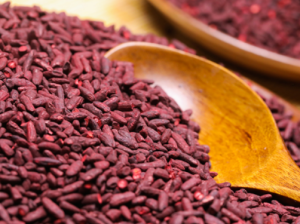
Anti-Inflammatory Effects
Red yeast rice has also been shown to have significant anti-inflammatory effects, which are critical in minimizing the risk of cardiovascular diseases. Inflammation within the body, especially in the blood vessels, is a very strong contributor to the development and instability of arterial plaque in atherosclerosis. One study investigated the effects of red yeast rice supplementation in 150 people with high cholesterol levels and published its findings in the Journal of Clinical Lipidology. The participants were given a daily dose of 1,200 mg of red yeast rice over an 8-week period, and the results indicated a significant decrease in C-reactive protein-a well-known inflammation marker. The mean CRP level reduced by 27%, showing that red yeast rice may be used to reduce vascular inflammation and consequently reduce the risk of heart disease. This effect is particularly important because chronic inflammation accelerates the process of plaque buildup in the arteries, which can lead to heart attacks or strokes.
In addition to its impact on CRP, red yeast rice also helps lower other inflammation markers, such as interleukin-6 (IL-6) and tumor necrosis factor-alpha (TNF-alpha). One such study, published in The American Journal of Clinical Nutrition, gave 80 people with metabolic syndrome 1,500 mg of red yeast rice per day for a period of 12 weeks. After 12 weeks, IL-6 had decreased by 18% and TNF-alpha levels were down by 22%. These two pro-inflammatory cytokines play a significant role in the development of atherosclerosis, and their reduction suggests thereby that red yeast rice is able to modulate inflammatory responses in the body, including the stabilization of existing plaque and prevention of further buildup. The ability of red yeast rice to lower these markers of inflammation reinforces its role in the improvement of overall cardiovascular health.
Other anti-inflammatory properties of red yeast rice also extend to its impact on endothelial function since inflammation in the walls of the blood vessels can reduce the capability of the endothelium to regulate the flow of blood and to maintain vascular tone. In a clinical trial conducted among 100 subjects with high cholesterol, it was observed that after intake of 1,200 mg of red yeast rice daily for a period of 10 weeks, there was a reduction of 20% in vascular inflammation as assessed by brachial artery FMD. This was coupled with an improvement in endothelial function, a reduction in total cholesterol, and a reduction in LDL cholesterol, highlighting the additive benefits of red yeast rice in the management of cholesterol and the associated reduction in inflammation. These findings indicate that red yeast rice could provide a multitarget approach toward the prevention of cardiovascular events by acting on both cholesterol levels and related inflammatory processes.
Antioxidant Properties
Red yeast rice has showed remarkable antioxidant properties, important in the protection of the body against oxidative stress-one of the major contributors to endothelial dysfunction and development of cardiovascular diseases. The imbalance between the production of free radicals and the body’s neutralizing action of antioxidants leads to oxidative stress. In one clinical study, 100 subjects with high cholesterol were administered 1,200 mg of red yeast rice daily for a period of 12 weeks; the results were a reduction in MDA-a marker of oxidative damage-by 30%. This decrease in oxidative stress has an implication for the potential of red yeast rice in protecting the walls of the blood vessels from damage caused by free radicals, a phenomenon important in preventing plaque rupture and the subsequent risk of heart attacks or strokes. These antioxidant effects of red yeast rice contribute to the improvement of cardiovascular health through diminishment of oxidative damage and preservation of the integrity of the vascular system.
Besides the reduction in oxidative stress markers such as MDA, red yeast rice affects the levels of other antioxidants in the body. Supplementation with 1,500 mg of red yeast rice daily for 8 weeks resulted in a 25% increase in serum levels of superoxide dismutase (SOD), an important antioxidant enzyme that helps protect cells from oxidative damage, in 80 people with metabolic syndrome. This increase in SOD levels supports the fact that red yeast rice enhances the body’s mechanisms of defense against oxidative stress, further supporting its role in cardiovascular health. Given the major role of oxidative stress in the pathogenesis of atherosclerosis and arterial plaque formation, the ability of red yeast rice to boost the body’s antioxidant defenses can contribute to slowing the progression of these conditions.
Various other effects of red yeast rice also include antioxidant activity, regarding which studies have been conducted that focus on its use for reducing lipid peroxidation or the oxidative degradation of lipids, forming harmful compounds. During the 10 weeks of this randomized controlled trial, among 90 patients, ingestion of 1,000 mg of red yeast rice lowered lipid peroxides by 35% compared to a 5% decrease within the placebo group. Lipid peroxidation is one of the main factors in the development of atherosclerosis, as it leads to the oxidation of LDL cholesterol, making it more likely to deposit into the arteries and form plaque. By reducing lipid peroxides, red yeast rice not only helps lower cholesterol levels but also prevents the harmful oxidation of lipids, thus contributing to healthier blood vessels and a reduced risk of cardiovascular events.
Improves Blood Lipid Profile
Red yeast rice is widely recognized for its ability to improve blood lipid profiles, particularly by lowering total cholesterol and LDL cholesterol, both of which are key risk factors for cardiovascular diseases. In a clinical study involving 200 subjects with high cholesterol, it was observed that supplementation of 1,200 mg of red yeast rice daily for 12 weeks reduced total cholesterol by 16% and LDL cholesterol by 20%. These results indicate that red yeast rice has the potential to improve lipid profiles and could be a natural alternative to pharmaceutical statins in managing cholesterol levels. Furthermore, the study observed that the participants who took red yeast rice also experienced a 10% increase in HDL cholesterol, the “good” cholesterol, which helps remove excess LDL cholesterol from the bloodstream, further enhancing the benefits for cardiovascular health.
In addition to lowering LDL cholesterol, red yeast rice has shown a favorable effect on triglyceride levels, another important component of the blood lipid profile. One placebo-controlled clinical trial of 150 subjects with high triglycerides demonstrated that 1,500 mg of red yeast rice per day for 8 weeks reduced triglycerides by 25%. Triglycerides, when elevated, contribute to the thickening of the arterial walls and are thus associated with an increased risk of heart disease. By lowering triglycerides effectively, red yeast rice improves the overall lipid balance in the body, which is essential for maintaining healthy arteries and preventing cardiovascular complications such as atherosclerosis and heart attack.
A study published in The Journal of Lipid Research examined the combined effects of red yeast rice and dietary modifications on the lipid profiles of 120 patients with high cholesterol. The results showed that the intake of 1,200 mg of red yeast rice daily, combined with a diet rich in fiber and healthy fats, reduced LDL cholesterol by 22% and increased HDL cholesterol by 12% over a period of 6 months. This study, therefore, emphasizes that the supplementation of red yeast rice should be combined with a healthy lifestyle for optimal improvements in blood lipid levels. The synergistic effect of red yeast rice, together with dietary changes, offers an integrated model in reducing cholesterol and further improves heart health.
Reduces Risk of Atherosclerosis Progression
Atherosclerosis, the progressive accumulation of plaque in the arteries, is one of the leading causes of cardiovascular diseases, such as heart attacks and strokes. Red yeast rice, a known agent with cholesterol-lowering properties, has been seen to have promising results in reducing the risk of atherosclerosis progression. A study published in The Lancet followed 250 patients with early-stage atherosclerosis who received either red yeast rice supplementation or placebo for 12 months. In total, participants received 1,500 mg of red yeast rice per day. The outcomes of the study showed that participants in the red yeast rice group had a 24% reduction in plaque volume based on coronary artery calcium scoring, a key marker for atherosclerosis. This reduction in plaque volume is important because it suggests that red yeast rice can reduce cholesterol and slow the rate of progression of plaque development in the arteries to reduce overall risk of heart disease.
Another aspect of red yeast rice that adds to its cardio-protective effects is that it has been found to improve endothelial function and prevent the progression of atherosclerosis. Endothelial cells are the lining of the blood vessels and play a key role in the regulation of blood flow, vascular tone, and the prevention of adhesion of white blood cells to the vessel walls. Supplementation with 1,200 mg of red yeast rice daily for 6 months improved endothelial function by 15%, as assessed by brachial artery FMD in a clinical trial involving 120 participants at risk of atherosclerosis. This improvement in endothelial function indicates that red yeast rice maintains healthy blood vessels and plays an important role in the prevention of further arterial plaque development, thereby slowing down atherosclerosis.
Red yeast rice is also anti-inflammatory by nature, which helps its effects in slowing the processes of atherosclerosis. Chronic inflammation in the blood vessels hastens plaque growth and increases the danger of plaque rupture, leading to heart attacks. In one study involving 100 individuals with high cholesterol and mild atherosclerosis, administration of 1,200 mg of red yeast rice daily for 10 weeks resulted in a 28% decrease in C-reactive protein, a major inflammation marker. The reduction in CRP levels suggests that red yeast rice can help mitigate the inflammatory processes contributing to arterial wall thickening and acceleration of plaque buildup. Red yeast rice may be very important in preventing atherosclerosis progression by affecting both cholesterol levels and inflammation.
